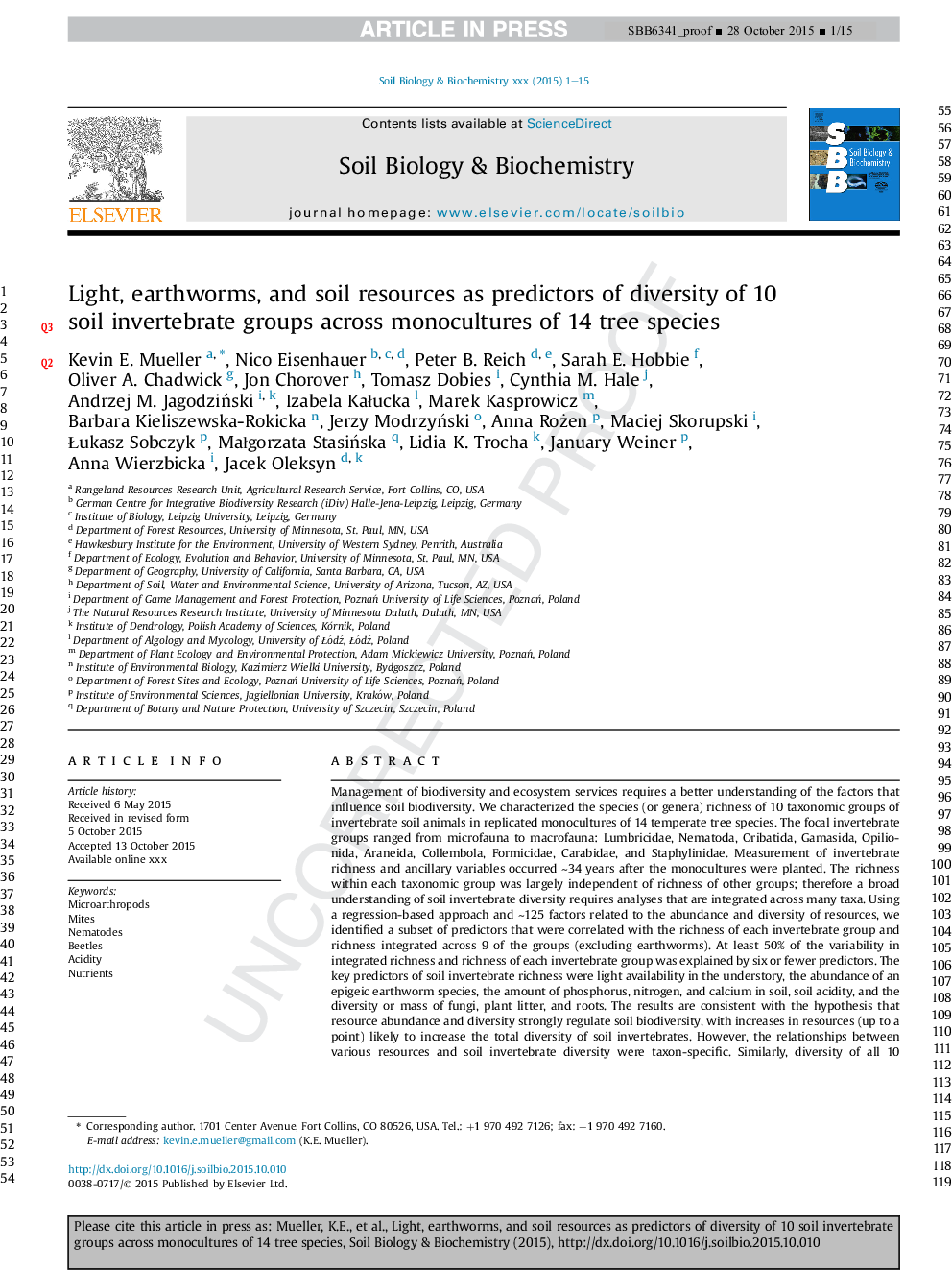| کد مقاله | کد نشریه | سال انتشار | مقاله انگلیسی | نسخه تمام متن |
|---|---|---|---|---|
| 8363684 | 1542592 | 2016 | 15 صفحه PDF | دانلود رایگان |
عنوان انگلیسی مقاله ISI
Light, earthworms, and soil resources as predictors of diversity of 10 soil invertebrate groups across monocultures of 14 tree species
ترجمه فارسی عنوان
نور، کرم های خاکی و منابع خاک به عنوان پیش بینی کننده تنوع 10 گروه غیرمتمرکزی در میان تک شاخه های 14 گونه درخت
دانلود مقاله + سفارش ترجمه
دانلود مقاله ISI انگلیسی
رایگان برای ایرانیان
کلمات کلیدی
موضوعات مرتبط
علوم زیستی و بیوفناوری
علوم کشاورزی و بیولوژیک
دانش خاک شناسی
چکیده انگلیسی
Management of biodiversity and ecosystem services requires a better understanding of the factors that influence soil biodiversity. We characterized the species (or genera) richness of 10 taxonomic groups of invertebrate soil animals in replicated monocultures of 14 temperate tree species. The focal invertebrate groups ranged from microfauna to macrofauna: Lumbricidae, Nematoda, Oribatida, Gamasida, Opilionida, Araneida, Collembola, Formicidae, Carabidae, and Staphylinidae. Measurement of invertebrate richness and ancillary variables occurred â¼34 years after the monocultures were planted. The richness within each taxonomic group was largely independent of richness of other groups; therefore a broad understanding of soil invertebrate diversity requires analyses that are integrated across many taxa. Using a regression-based approach and â¼125 factors related to the abundance and diversity of resources, we identified a subset of predictors that were correlated with the richness of each invertebrate group and richness integrated across 9 of the groups (excluding earthworms). At least 50% of the variability in integrated richness and richness of each invertebrate group was explained by six or fewer predictors. The key predictors of soil invertebrate richness were light availability in the understory, the abundance of an epigeic earthworm species, the amount of phosphorus, nitrogen, and calcium in soil, soil acidity, and the diversity or mass of fungi, plant litter, and roots. The results are consistent with the hypothesis that resource abundance and diversity strongly regulate soil biodiversity, with increases in resources (up to a point) likely to increase the total diversity of soil invertebrates. However, the relationships between various resources and soil invertebrate diversity were taxon-specific. Similarly, diversity of all 10 invertebrate taxa was not high beneath any of the 14 tree species. Thus, changes to tree species composition and resource availability in temperate forests will likely increase the richness of some soil invertebrates while decreasing the richness of others.
ناشر
Database: Elsevier - ScienceDirect (ساینس دایرکت)
Journal: Soil Biology and Biochemistry - Volume 92, January 2016, Pages 184-198
Journal: Soil Biology and Biochemistry - Volume 92, January 2016, Pages 184-198
نویسندگان
Kevin E. Mueller, Nico Eisenhauer, Peter B. Reich, Sarah E. Hobbie, Oliver A. Chadwick, Jon Chorover, Tomasz Dobies, Cynthia M. Hale, Andrzej M. JagodziÅski, Izabela KaÅucka, Marek Kasprowicz, Barbara Kieliszewska-Rokicka, Jerzy ModrzyÅski,
